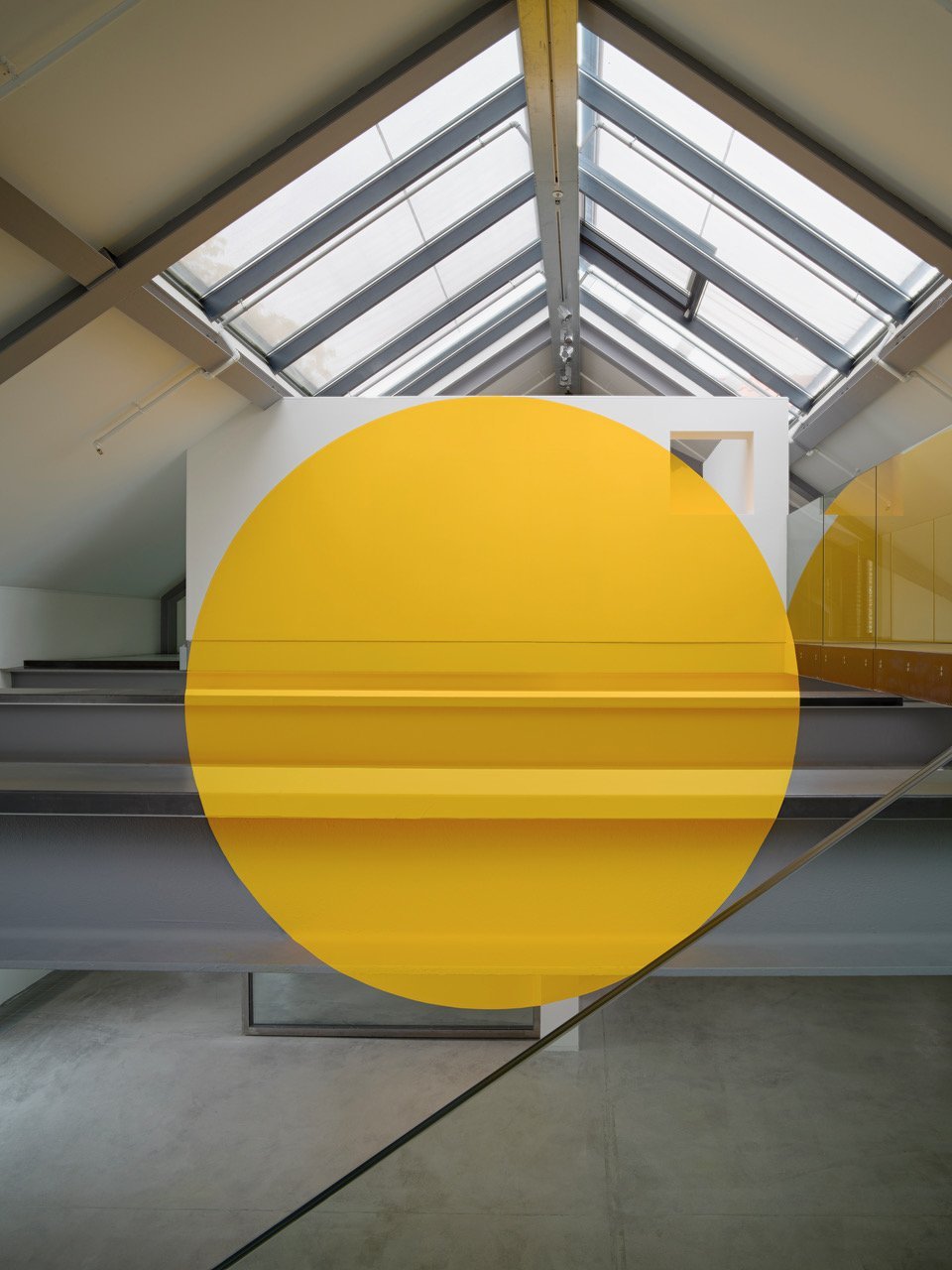
Chasse-sur-Rhône 2010 © Georges Rousse
Rising Circles — Georges Rousse
8 September - 16 December 2024
At 75, with hundreds of quadrature installations to his credit, Georges Rousse never ceases to amaze. As architect, draughtsman, visual artist and photographer, he has mastered every aspect of the construction of his photographic work. Georges Rousse allowed himself to be inspired by the spaces of the Hangar and conjured a yellow circle, like a “sun.” When the sun rises at the Hangar, it is echoed by a series of concentric circles, hence the name Rising Circles. For anyone looking at George Rousse's work, it's not just a matter of Close Enough, but also of defining a single, precise angle of view.
(FR, 1947) lives and works in Paris.
The circle: a meditative “everything and nothing”
I see abandoned places as nomadic workshops, being a nomad myself since childhood as the son of a career soldier. I continued as such once I became an artist, working from place to place, town to town, country to country. These are often sites of no architectural interest. I create my own space there for meditation that is conducive to the creation of a work, like an ephemeral studio. In these no-man’s lands, far removed from any sense of spirituality, the waste of urban development is laid bare before us. Photographing these abandoned places has always been at the heart of my artistic interest. Blockhouses have been my playground ever since I was a child living in a frontier region, so it was only natural that I should photograph them and fall in love with their sometimes monumental vacant spaces.
-
I don’t own the places where I work. I go there on the pretext of creating a work of art, but I enjoy wandering and poking around in search of traces of the past, incongruous objects that somehow got there.
Once I’m there, I look at the incidence of light on the architecture, the nooks and crannies that might inspire and contain architectural treasures.After a while, a form takes shape, circular, with or without colour, with or without material, but the watercolour I painted beforehand enables me to anticipate the actionof the future transformation. What I like above of all is the transformation of space and pushing back its boundaries.
My travels have taken me to Japan many times, to places that have been dramatically offered up, after the earthquake in Kobe and more recently after the tsunami that devastated the Fukushima region. Working in dramatic situations does not however prevent us from understanding and appreciating the different philosophies of this country. Japan is not the ‘Eldorado’ that everyone dreams of, but its ‘Zen’ spirit appeals to artists. I was touched by its intuitive side devoid of any angelic connotations. So I became interested in the circle, the Enso, which is found in Japanese calligraphy. With its simplicity and imperfections (it is drawn by hand), it symbolises everything and nothing all at once, and is associated with a kind of meditation.In the West, we have lost our sense of calligraphy, but not of geometry or aesthetics. The circle is said to be a ‘perfect’ shape in geometry, and its symbolism is manifold, giving rise to different interpretations. In any case, the circle also suggests movement – a wheel that keeps turning.
For me, as a photographer, it represents the lens. The circle delimits a space. Our architectural spaces are chiefly orthogonal, and the circle is like the wheel that pushes back the verticality of the walls.I’ve tried to define it in different ways during my various wanderings: drawn, empty, full, suggested, on fire...
This is the story I’d like to tell through “Rising Circles.“ Georges Rousse

